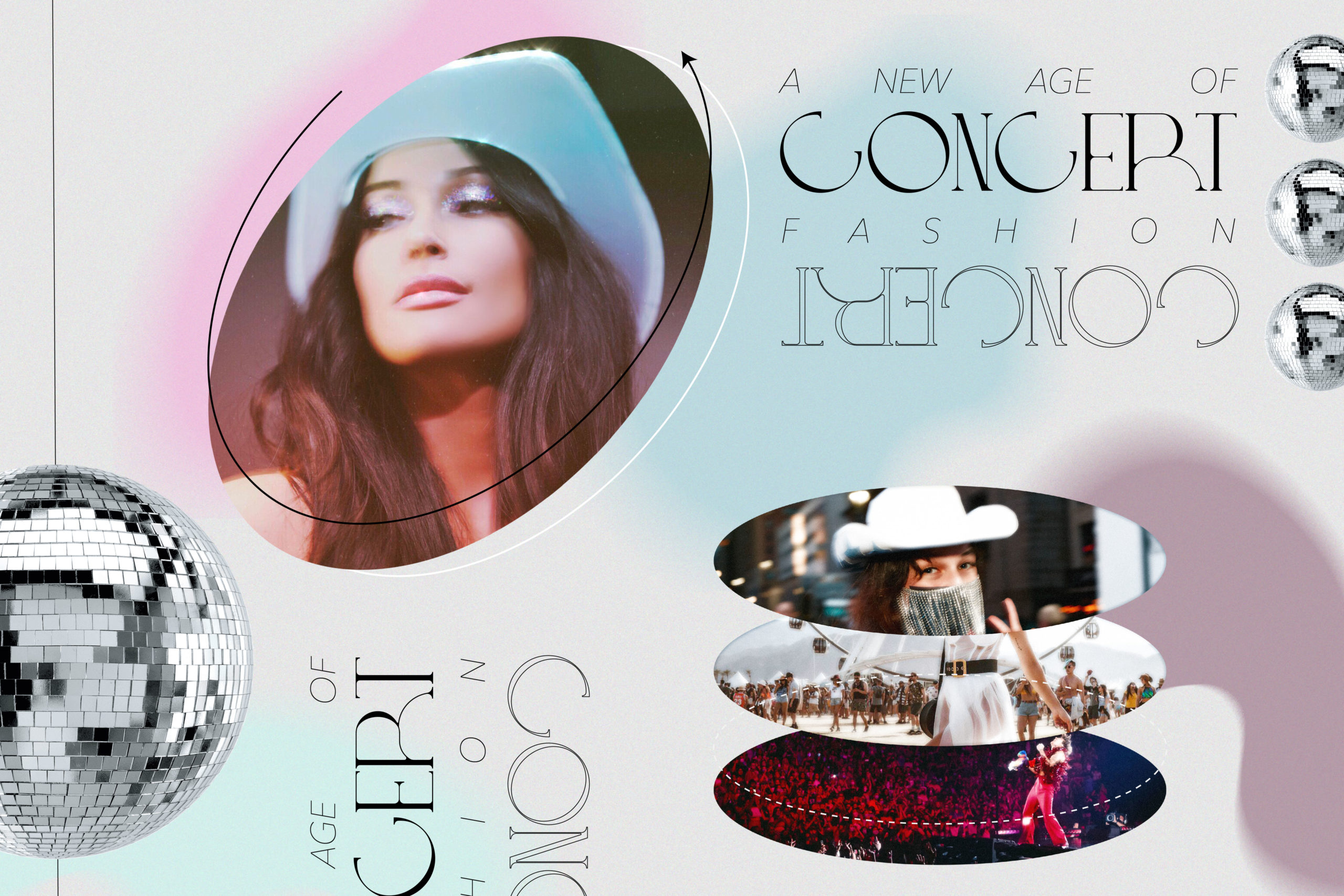Last week I saw Kacey Musgraves in concert, and as a lover of fashion, it was one of the most visually entertaining nights of my life. Decked out in sparkles, cowboy hats, and shocking pink fringe, audience members made the State Farm Arena their own personal runway. Kaceycore took Atlanta by storm, and I was living for it.
As I was planning my own outfit, I started to think about how much concert culture has changed over the years— especially since the pandemic. While people certainly dressed up for concerts and the performers had campy costumes, I feel that it wasn’t until recently that most attendees started to plan their outfits in extensive detail and meaning. While people at Woodstock might have worn a crochet top, bell bottoms, and flower crown, now they’re sewing their own outfits and spending hours hot gluing rhinestones to their boots. I’ve seen countless Tiktoks and Instagram posts showcasing elaborate outfits and crazy costumes.
While general concert fashion is relatively new, it’s important to pay homage to the subculture that preceded it. In the ’80s, the rave scene emerged, which catalyzed the concept of wearing outlandish outfits to a party scene. There wasn’t a clear dress code, but big hair, colorful makeup, and offbeat outfits were the norm. By the ’90s, a sort of uniformity arose, and rave trends became relevant. This is also about the time when rave or EDM was introduced to mainstream music. Over the following decades, people who attended raves followed patterns, swinging back and forth from brightly colored to earthy-toned ensembles.
In 2012, Coachella took the world by storm, which further blended the line between concert and rave fashion. With the pull of internet influencers in attendance, it suddenly became one of the coolest things a person could do. I vividly remember binging every “What I Wore to Coachella” video on Youtube, green with envy that I couldn’t go. Granted, I was eleven and didn’t know the majority of the bands that performed, but the fear of missing out was heavy on my younger self. I loved seeing the festival tops, floral maxi skirts, and headbands. It was my first introduction to the concept of planning crazy outfits for an event, and I feel that many other people my age might feel the same. While it most likely reached its peak around 2016, the Age of Coachella reigned supreme up until the pandemic.
Having seen the world shut down and then it’s hesitant reopening, I’ve definitely noticed a shift in the way people dress for events. During the lockdown, I saw many people plan extravagant outfits that they would wear to concerts just to maintain their sanity. Once people actually could go to concerts again, it’s evident that they took those ideas and ran with them. Now, concert fashion is much more similar to rave and festival fashion, with much more thought behind each ensemble. In my opinion, the most popular example is Harry Styles: Love on Tour, which took place from September to December last year. There was a clear aesthetic for concert attendees, and videos of partygoers getting ready went viral. People went all out with glitter, brightly printed pants, funky boots, and even fruit costumes.
Since the fall, I’ve seen more and more videos of concert outfits, and while they may not be of the same caliber as Harry Styles, they are noticeably more detailed. There has been a real shift in the attitudes towards concerts, and I feel that it’s by and large due to the fact that everyone is grateful to be able to go to events like these again. I love that people are putting more effort into their concert outfits, and I’m so excited to experience this new age of concert fashion.
Words by: Caroline Tetlow.
Graphic by: Danna Macias Rodriguez.

